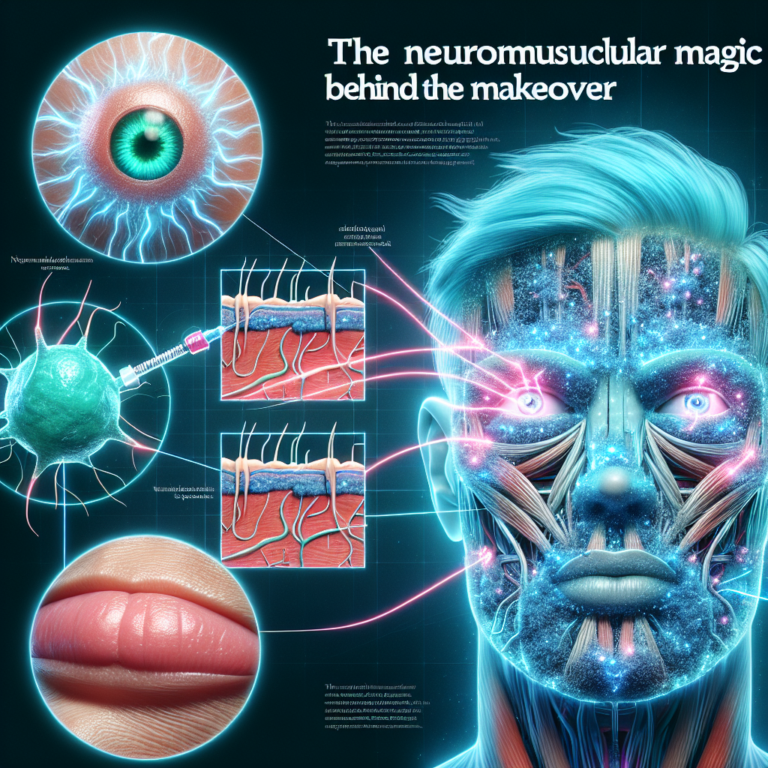How Botox Works: The Neuromuscular Magic Behind the Makeover
Botox, a name synonymous with beauty and rejuvenation, has taken the world of cosmetic enhancement by storm. Known for its ability to smooth wrinkles and enhance facial features, Botox plays a central role in non-surgical aesthetic treatments. But how does this miraculous substance work? To understand its effects, we must delve into the realm of neuromuscular function, exploring the magic that occurs at the intersection of biology and beauty.
The Origins of Botox
Botox is a brand name for botulinum toxin type A, a protein produced by the bacterium Clostridium botulinum. While this toxin is associated with food poisoning in its uncontrolled form (botulism), when used in minute, regulated doses, it can be a powerful tool in both medicine and aesthetics. Approved by the FDA in the mid-1980s for treating various medical conditions, including excessive sweating and muscle spasticity, its cosmetic applications soon gained popularity.
The Neuromuscular Connection
At its core, Botox operates within the neuromuscular junction—a critical area where nerves communicate with muscles. The governing process involves several steps:
-
Nerve Signal Transmission: When your brain sends a signal to contract a muscle, it travels down a motor neuron. This signal ends at the neuromuscular junction, where the nerve releases a neurotransmitter called acetylcholine.
-
Acetylcholine Action: Acetylcholine binds to receptors on the muscle fibers, triggering a response that causes the muscle to contract. This contraction is what allows us to perform movements—facial expressions included.
- The Role of Botox: When Botox is injected into specific muscles, the botulinum toxin blocks the release of acetylcholine at the neuromuscular junction. This inhibition prevents the targeted muscles from contracting, leading to a temporary reduction in muscle activity.
The Aesthetic Effect
The cosmetic effects of Botox are particularly noticeable in areas prone to dynamic wrinkles—lines that form from repetitive facial expressions, such as frowning or squinting. Common treatment areas include:
- Forehead Lines: Horizontal lines that develop across the forehead as a result of raising the eyebrows.
- Frown Lines (Glabellar Lines): Vertical lines between the eyebrows that result from scowling or concentrating.
- Crow’s Feet: The fine lines that appear at the outer corners of the eyes when smiling or squinting.
By strategically injecting Botox into these muscles, practitioners can effectively smooth out these wrinkles, giving the face a more youthful and relaxed appearance. The results typically last for three to six months, after which muscles begin to regain their function, and retreatment may be required for continued effects.
Safety and Considerations
While Botox is generally regarded as safe when performed by qualified professionals, it is essential to consider potential side effects. Common side effects may include localized pain, swelling, or bruising at the injection site. In rare cases, the toxin may spread, leading to muscle weakness or drooping in adjacent areas, underscoring the need for expert administration.
Beyond Aesthetics
Botox’s benefits extend beyond cosmetic enhancement. Medically, it is used to treat conditions like chronic migraines, cervical dystonia, and hyperhidrosis (excessive sweating). The mechanism remains similar; by blocking nerve signals to muscles or glands, Botox can alleviate discomfort and improve quality of life for many patients.
Conclusion
Botox has positioned itself as the go-to solution for individuals seeking to turn back the clock on their appearance. Its neuromuscular magic lies in its ability to interrupt the communication between nerves and muscles, allowing for a temporary reprieve from the telltale signs of aging. Whether used for cosmetic or medical purposes, understanding how Botox works illuminates its transformative power, making it an enchanting topic worthy of exploration—and perhaps a little bit of experimentation.


